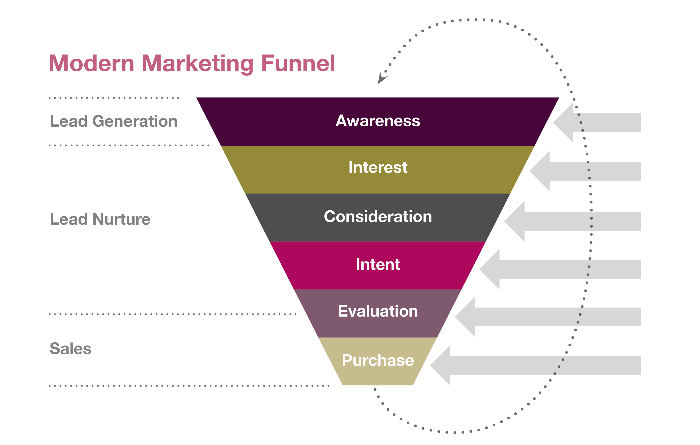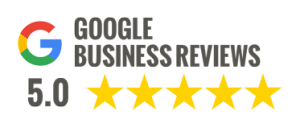What is Inbound Marketing?
Many digital marketers think they know inbound marketing, but so often they don’t understand how to see the bigger picture. What is inbound marketing and what makes it unique is that it creates valuable experiences for your audience by attracting them to your website and then guiding them down the modern-day funnel. It’s up to you to engage with them. By creating valuable content, you’ll be able to create an inbound marketing strategy that will engage with your audience and turn them into loyal customers.




INBOUND MARKETING BLOG POSTS
HubSpot marketing offers a full platform of marketing, sales and customer service software. They are considered industry leaders in inbound marketing by looking at what's needed today opposed to being stuck in the past.
Implementing an inbound marketing strategy without a content management system (CMS) and customer relationship management (CRM) system like HubSpot is going to be difficult. Inbound marketing enables you to build a funnel within these systems so all teams are clear on the initiatives. Therefore, it is essential for marketing and sales to collaborate in order to be successful with inbound.
Before even looking at your CMS and CRM, make sure both departments understand the modern-day funnel. When the marketing team doesn’t know when to pass a lead to sales or the sales team doesn’t know when to close, roles and responsibilities can cross over. There are still organizations who look at marketing as the make it pretty department. That is simply not the case. If companies look at marketing that way, they will soon be wiped out by their competition who is utilizing on-point strategies like inbound.
According to the Content Marketing Institute, 80 percent of decision-makers prefer to get company information in a series of articles versus in an advertisement or sales call. Forrester Research says that when companies excel at inbound, they can generate 50 percent more sales-ready leads at 33 percent lower costs. By investing in integrating your CRM and CMS, you’ll be able to position yourself to accelerate growth with inbound marketing. But not just any integration will work. It’s important to make sure your systems can perform the necessary steps of marketing automation for effective lead nurturing.
THE FLYWHEEL VERSUS THE MODERN-DAY FUNNEL
How audiences are using technology and communicating with businesses have changed. HubSpot provides a CRM and CMS that fully supports inbound marketing, and they first break it down by talking about attracting, delighting and engaging your audience.
The goal is to move past how to go to market and focus on providing better experiences. HubSpot’s flywheel framework focuses more on the buyer’s journey as it relates to customer experience, which is the main driver for growth.
HubSpot has spoken about dumping their funnel and sticking to the flywheel. Marcom Content by Ashley, LLC ™ (MCA) still sees the value in the funnel. It’s just changed. You should never look at the funnel as a linear approach because a user can come in at any stage because of things like search engine optimization (SEO).
MCA completely agrees that funnels can lose their momentum at the bottom. Nevertheless, a good inbound marketing approach will keep the funnel in mind by leveraging the flywheel approach to keep that momentum.
For the most part, MCA is completely aligned to HubSpot, but this is a piece that is slightly different. MCA believes that the funnel should leverage the flywheel. The reason why they don’t ignore all the stages in the funnel is because of SEO. Every web page and even every marketing deliverable has a purpose and meets a user in a particular stage within the funnel.
When a website is designed by the funnel, you can better understand how to leverage search intent, which is very much needed for machine learning. Artificial intelligence is only going to increase, so marketers can’t ignore the stages within the funnel in order to make sure they are creating pages that meet the intent for that search. The flywheel approach is relationship focused, and the funnel is more linear. However, things work better when we move ahead and take a few of our best methods with us.

- Attract - This stage leverages your expertise to create content and conversions that start meaningful conversations and relationships with the right people. This is just like the attract stage in the funnel.
- Engage - This stage builds lasting relationships by providing insights and solutions that align with your audience’s goals and pain points. This is where lead nurturing is taking place.
- Delight - This stage is about providing an outstanding experience to create promoters of your company.
The traditional funnel used to have fewer stages and more sales than marketing. Now, the modern-day funnel has more marketing than sales and includes more stages. The modern-day funnel consists of awareness, interest, consideration, intent, evaluation and purchase. Even more, the modern-day funnel can work with the flywheel.
The reason why you are seeing a dotted line at the end of the funnel is that it doesn’t have to end at the conversion. THE FUNNEL CAN ATTRACT CUSTOMERS INTO THE FLYWHEEL. The flywheel helps you to maintain a relationship with your customers and increase the value of your brand. Engagement really begins at the attraction stage within the funnel, thus creating a circle or a flywheel.
INBOUND VS. OUTBOUND MARKETING
Outbound marketing tends to have an old school mentality. This is when marketing pushes products or services on customers. Inbound, on the other hand, is a new marketing approach. It’s any marketing tactic that relies on earning people’s interest instead of buying it.
Most digital marketers think inbound is really just SEO, but this is what MCA means about looking at your marketing holistically. For example, HubSpot is mostly about content, and they are not typically known as SEO experts. SEO marketers understand the value of search intent and keywords but don’t understand what good inbound means.
A company can acquire a lot of traffic to their blog but those people may never move down the funnel. By nature, a blog post is in the awareness stage. A good digital marketer will think about the call to action that will move their audience down to the interest stage.
At the end of the day, it’s always about the message and the content. Outbound marketing can come off super promotional and obnoxious. Inbound is more educational and helps you to build those relationships without being obnoxious.
E-COMMERCE AND INBOUND
E-commerce, in particular, is where SEO is extremely important. While you can drive lots of traffic to your website, identifying the types of traffic is crucial. Qualifying the users who are entering your website will require a strategic inbound approach and a solid understanding of e-commerce. One way to make sure your website is built to acquire leads is by making sure you have it organized by the funnel. Every web page has a purpose and every web page should hit a stage.
With e-commerce, you’re building a profile of your user and defining the type of products they may be interested in purchasing. Website visitors are not leads. This is very important to remember because a web visitor can come to your website and then leave without ever coming back. The only way a website visitor will become a lead is when they fill out a form, providing you with information like an email address.
E-commerce is the activity of buying a product on your website. Therefore, you will still want to leverage lead nurturing to eventually get the web visitor to buy. Once you have that email address, you can start nurturing. By utilizing marketing automation, you can set triggers to take your lead to the next step within the funnel.
SHOPPING CART ABANDONMENT
Shopping carts get abandoned all the time on e-commerce websites, which is why marketing automation can help you. PayPal says that 75 percent of shopping carts are abandoned before the sale is closed. This can be from a variety of reasons – poor registration experience, high shipping costs, etc.
By asking the user for their email address prior to them putting an item into a cart, you’ll be able to keep that lead even if they abandon you. Then, you’ll be able to nurture them with valuable content through email workflows.
Without marketing automation, it can be difficult converting leads to customers. Here are the types of marketing automation to leverage for e-commerce:
- Welcome workflow emails
- Product recommendations
- Geo-targeting
- Cart abandonment reminders
DEMAND GENERATION AND INBOUND
Demand generation and inbound are very different. When you hear demand generation, think of it as driving revenue with traditional outbound marketing approaches. While technology has evolved, there is nothing really different about demand generation and outbound.
MCA still believes that there is value in some traditional approaches. That’s why you need to make sure you have the right mix of demand generation and inbound marketing. The best marketing strategy will include an integrated approach.
Demand generation can be a content promotion or a weekly newsletter. It really shouldn’t be a banner ad or an e-blast. Companies can make a distinction in this by committing to long-term customer relationships by having a strategic mindset to content development overall.
When you look at inbound marketing as a type of demand generation activity, you’ll be able to find that healthy balance and achieve growth. Common demand generation tactics include social media services, podcasts and content offers. These are content-driven resources that establish thought leadership and turn your company into an information hub.
Inbound focuses on creating quality content that pulls people towards a company. By aligning content and strategic messaging, you’ll be able to naturally attract, engage and delight your audience with both demand generation and inbound approaches.


